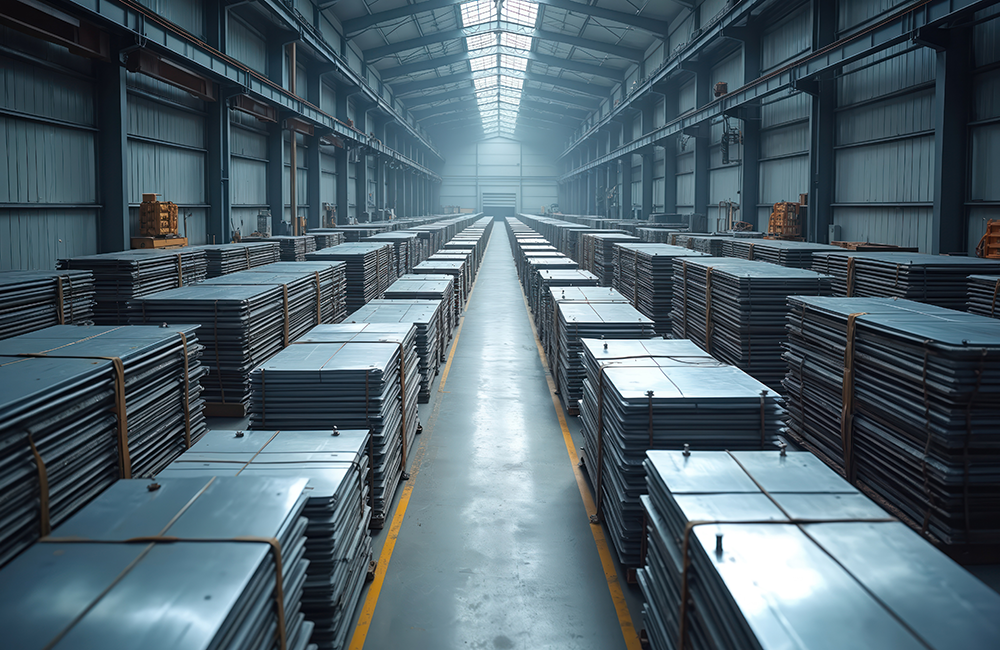Stainless MMI: Stainless Market Extends Slump as Reciprocal Tariffs Spare Steel

The Stainless Monthly Metals Index (MMI) remained sideways, with an upside bias. Meanwhile, nickel prices dropped to lows last seen in 2020. Overall, the index rose by 2.16% from March to April.
Buyers Hold Back from Stainless Market
The U.S. stainless steel market remains lackluster. While March witnessed a modest increase in shipments, some suppliers noted that the overall market felt weak. Meanwhile, prices appeared stable during the month, with suppliers noting little change despite Outokumpu’s recent discount announcement.
Although mills continue to operate with capacity discipline, buyers and service centers have maintained a cautious approach to the market. This has seen mill lead times hold stable at historically short ranges despite a reported uptick in sales activity, and discounts from mills also remain high. MetalMiner reports stainless mill discounts in the Monthly Metal Outlook Report and Should-Cost Models on Insights.
We know what you should be paying for metals. MetalMiner should-cost models are the ultimate savings hack, showing you the “should-cost” price for gauge, width, polish and finish adders. Explore what value they can add to your organization.
Reciprocal Tariffs Exempt Steel
Unlike markets for things like carbon steel, the recent tariff announcements had no meaningful impact on stainless steel prices. Section 232 duties already apply to leading suppliers like Vietnam and Indonesia, as neither country managed to negotiate carveouts from the tariffs applied back in 2018.
Competitively priced Asian material has continued to dictate domestic market prices, limiting any mill attempts to cut discounts. Meanwhile, reciprocal tariffs announced in early April spared the broader steel market, avoiding any further disruption. As a result, cold rolled stainless import levels appeared relatively stable over recent months, with data from the Department of Commerce indicating a slight increase in March.
What is Being Affected?
This contrasts with markets like carbon steel. Hot rolled coil imports witnessed a gradual drop off in the months leading up to the reapplied Section 232 duties, which took effect on March 12. These duties, in addition to those placed on Canada and Mexico, voided all exemptions negotiated in the years that followed the original Section 232 tariffs in 2018.
Also shaping the import market, carbon steel boasts a more varied supplier base. Canada, South Korea and Japan stand as the top three exporters of HRC into the U.S., versus Taiwan, Vietnam and Indonesia, which represent the leading cold rolled stainless exporters into the U.S.
NAS Makes Surprise Stainless Price Announcement
Amid lackluster market conditions, North American Stainless (NAS) surprised markets with a new pricing announcement. The mill revealed an adjustment to its quoting policy, noting, “All quotes will reflect current market prices at the time of inquiry and will have limited validity: 24 hours for transactional quotes and five business days for contract agreements. Please note that expired quotes will require a new inquiry.”
NAS attributed the decision to “tariff announcements, challenges in import-reliant supply chains and fluctuating demand.” While NAS appears careful amid tariff uncertainty, looking more critically, the announcement likely aims to bolster its position ahead of the H2 contracting season, which begins in mid-April.
Although NAS fell short of announcing price increases, this move echoes Outokumpu’s recent discount cuts. Despite a largely stable market, sources largely viewed Outkumpu’s efforts as a bid to bolster its position with buyers ahead of contracting. MetalMiner outlines buying and contracting strategies in its Monthly Metals and Annual Outlook reports.
Nickel Prices Tank Amid Bearish Economic Outlook
While tariffs had no meaningful impact on stainless steel prices, they did serve to spook broader economic growth outlooks. Concern over wide ranging reciprocal tariffs saw several metal markets tank. Nickel prices now sit at their lowest level since August 2020, having dropped significantly below their sideways range. Should this continue, it could become a new bear trend.
Recent, albeit modest, declines in the U.S. dollar index (DXY) proved supportive of the base metal category over the past few months. However, the U.S. dollar index has since stabilized, holding above its long-term support level around the 100 mark. Meanwhile, reciprocal tariffs largely surprised markets, triggering a broad sell-off on a number of assets, including stocks and base metals.
These moves have revived recession fears in the U.S., which would significantly impact global growth and demand conditions. In the coming months, nickel prices could see additional volatility. MetalMiner outlines these trends weekly in its newsletter.
Predicting the Future of Nickel Prices
Sharp declines will invariably mean a lower stainless surcharge for nickel, particularly for grades like 304, which fluctuating nickel prices influence heavily. At the start of April, NAS’ 304 stainless surcharge managed to rebound to its highest level since December due to higher nickel and copper prices.
However, recent declines in both markets will likely wipe out those gains. While bad news for mills, falling metal prices offer a bit of good news for metal buyers needing to secure material for the second half of the year.
Biggest Nickel and Stainless Steel Price Moves
Stay a step ahead of tariff price increases and industry metals price shifts by breaking out your parts spend to know exactly where you’re being charged the most. Learn more about Insights SV.
- Indian primary nickel prices witnessed the largest increase of the overall index, with a 4.07% rise to $16.42 per kilogram as of April 1.
- Chinese ferrochrome prices rose by 2.74% to $1,165 per metric ton.
- Meanwhile, the Allegheny Ludlum surcharge for 304/304L coil fell by 2.89% to $0.89 per pound.
- Chinese ferromolybdenum prices witnessed a 3.2% decrease to $30,095 per metric ton.
- The Allegheny Ludlum surcharge for 316/216L coil fell 4.31% to $1.41 per pound.
